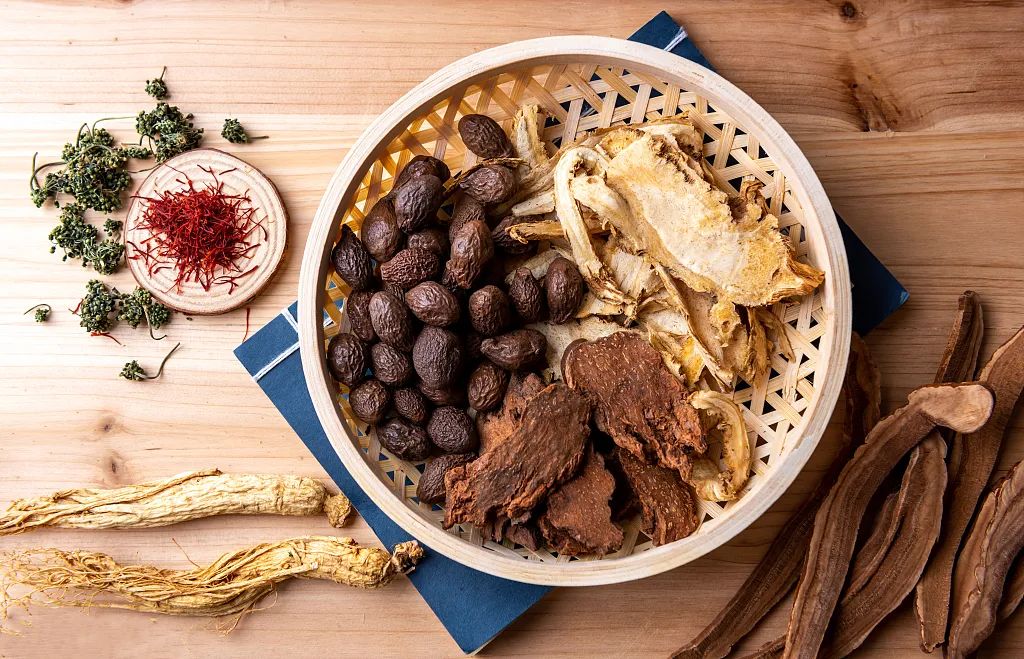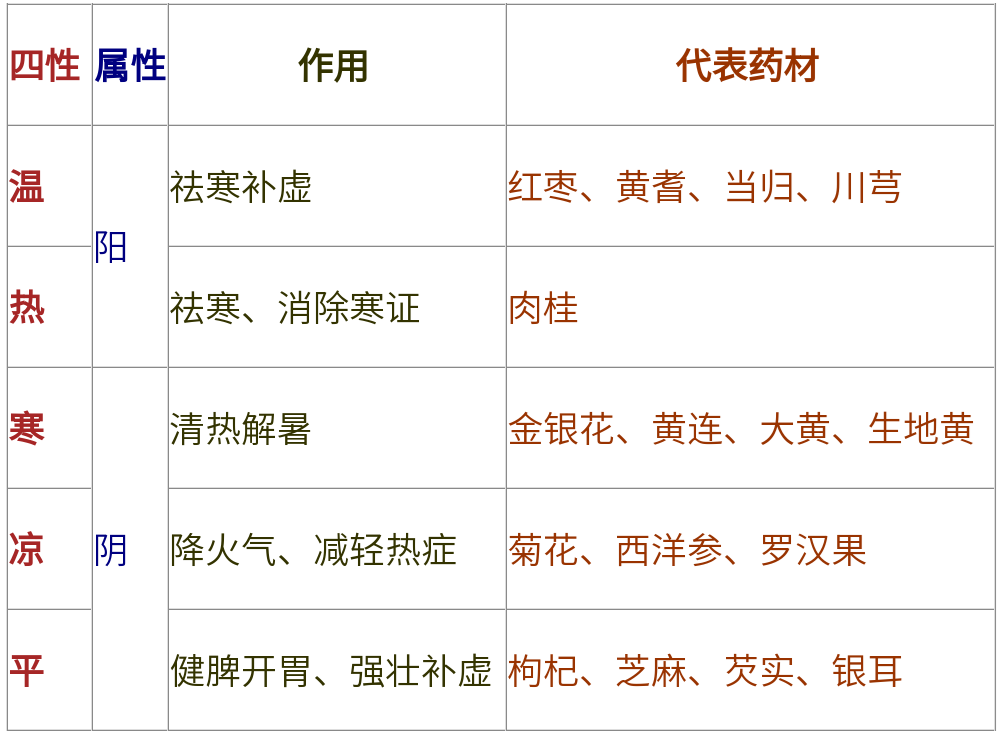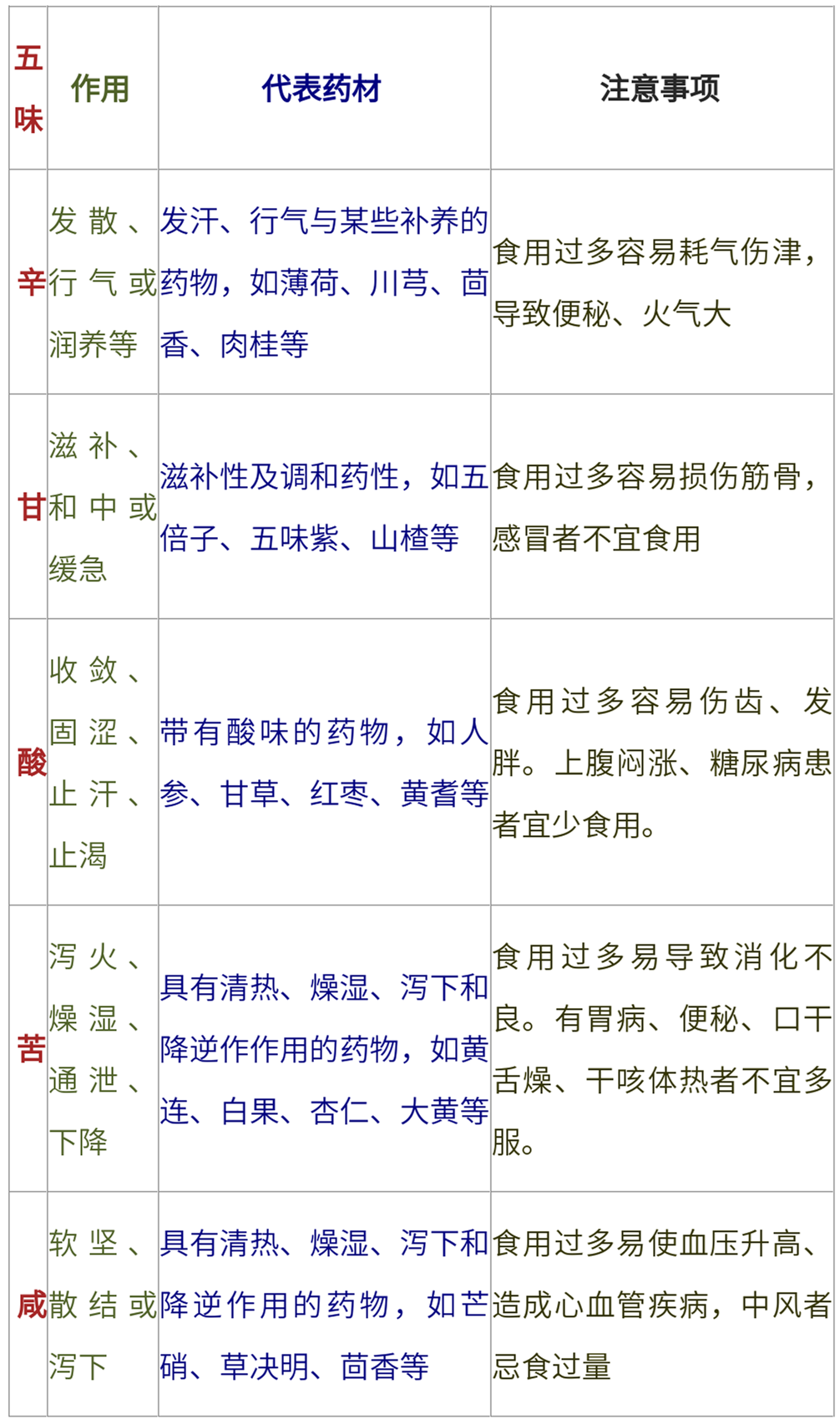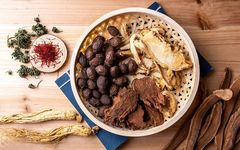


In Traditional Chinese Medicine (TCM), treating diseases requires not only a correct diagnosis of the patient’s condition but also a proficient understanding of the properties of Chinese herbs to effectively apply them in clinical practice.
The properties of Chinese medicine refer to the fundamental nature and characteristics of herbal medicines, also known as medicinal properties. The theory of medicinal properties is the core of TCM, primarily encompassing the Four Qi, Five Flavors, meridian affinities, ascending and descending actions, and toxicity.
There are numerous varieties of Chinese herbs, each with a specific range of applications. For example, Da Huang (Rhubarb) can treat constipation, Zi Su (Perilla) can treat colds, Huang Qi (Astragalus) can treat Qi deficiency, and Pu Gong Ying (Dandelion) can treat abscesses and boils. Different conditions require the selection of different herbs for treatment.



 Four Qi: Cold, Hot, Warm, Cool
Four Qi: Cold, Hot, Warm, Cool


The Four Qi and Five Flavors represent the properties and tastes of medicinal substances, encompassing both the medicinal properties and flavors. The term ‘Qi’ refers to the nature of the herb, thus the Four Qi also refers to the Four Natures.
The Four Qi consists of the four medicinal properties: Cold, Hot, Warm, and Cool. Cold and Cool are opposing properties, while Cold and Cool, as well as Hot and Warm, differ in degree, meaning they share the same property but differ in intensity. Warm is less intense than Hot, and Cool is less intense than Cold.
The properties of Cold, Hot, Warm, and Cool are derived from the reactions of the herbs on the human body. For instance, symptoms such as aversion to cold, fever, clear nasal discharge, prolonged clear urination, and a white tongue coating indicate Cold symptoms. In this case, using Zi Su (Perilla) and Sheng Jiang (Fresh Ginger) in a decoction can induce sweating and alleviate these symptoms, indicating that the properties of Zi Su and Sheng Jiang are Warm and Hot. Conversely, if there are symptoms of boils, redness, swelling, pain, yellow urination, yellow tongue coating, or fever, these indicate Hot symptoms. In this case, using Jin Yin Hua (Honeysuckle) and Ju Hua (Chrysanthemum) can be effective, indicating that their properties are Cold and Cool.
Generally, Cold and Cool herbs primarily have functions such as clearing heat, purging fire, and detoxifying, and are commonly used to treat heat-related diseases. Warm and Hot herbs typically have functions such as warming the center, assisting Yang, and dispersing Cold, and are often used to treat Cold-related diseases. Additionally, there are some neutral herbs whose Cold and Hot properties are not distinct, but they still exhibit slight tendencies towards Warm or Cool, which is relative to their neutral classification, and they remain within the scope of the Four Qi. Thus, the essence of the Four Qi is fundamentally Cold and Hot.

 Five Flavors: Spicy, Sweet, Sour, Bitter, Salty
Five Flavors: Spicy, Sweet, Sour, Bitter, Salty


The Five Flavors consist of Spicy, Sweet, Sour, Bitter, and Salty, which are identified primarily through the taste organs or determined based on their effects observed in clinical treatments.
Additionally, since the Bland flavor does not have a distinct taste, it is generally grouped with the Sweet flavor, referred to as ‘Bland attached to Sweet’; simultaneously, the Astringent flavor has effects similar to the Sour flavor, thus although there are seven flavors, they are commonly referred to as the ‘Five Flavors.’
The relationship between Qi and flavor is very close; each herb possesses a specific Qi and flavor. Since Qi has its effects and flavor has its effects, it is essential to consider both together. For example, Lu Gen (Reed Rhizome) has a Sweet and Cold nature, where Sweet can generate fluids and Cold can clear heat, indicating that its primary function is to clear heat and generate fluids; Zi Su has a Spicy and Warm nature, where Spicy can disperse and Warm can dispel Cold, indicating that its primary function is to disperse Wind and Cold.
Generally, herbs with similar Qi and flavor tend to have similar primary functions; herbs with different Qi and flavors will have different effects. Even herbs with the same Qi but different flavors, or the same flavor but different Qi, can have both commonalities and differences in their effects. For instance, among Cold herbs, if the flavors differ, whether Bitter Cold or Spicy Cold, their effects will vary. Huang Lian (Coptis) is Bitter Cold and can clear heat and dry dampness; Fu Ping (Duckweed) is Spicy Cold and can disperse Wind-Heat. Similarly, among Sweet herbs, if the Qi differs, whether Sweet Warm or Sweet Cold, their effects will also differ. Huang Qi (Astragalus) is Sweet Warm and can tonify Qi; Lu Gen (Reed Rhizome) is Sweet Cold and can clear heat and generate fluids. Therefore, when identifying the properties of herbs, one must not isolate the Qi from the flavor.
The above is for reference only; please consult a physician for guidance in your treatment.
Reviewed by: Pharmacist Lu
Edited by: San Qi Xiao Mei
Return to the main pageReply to any of the followingkeywords
to view the corresponding articles
| Back Diagnosis | Face Diagnosis | Tongue Diagnosis | Sweat Diagnosis | Eye Diagnosis | Differentiation |
| Gua Sha | Cupping | Moxibustion | Acupressure | Foot Therapy | Meditation |
| Tapping | Stretching | Veins | Nails | Acne | Stones |
| Liver Cirrhosis | Home Feng Shui | San Fu Tie | Vinegar Soaked Eggs |
| Tips | Tests | Winter Disease Summer Treatment | Self-Treatment |

